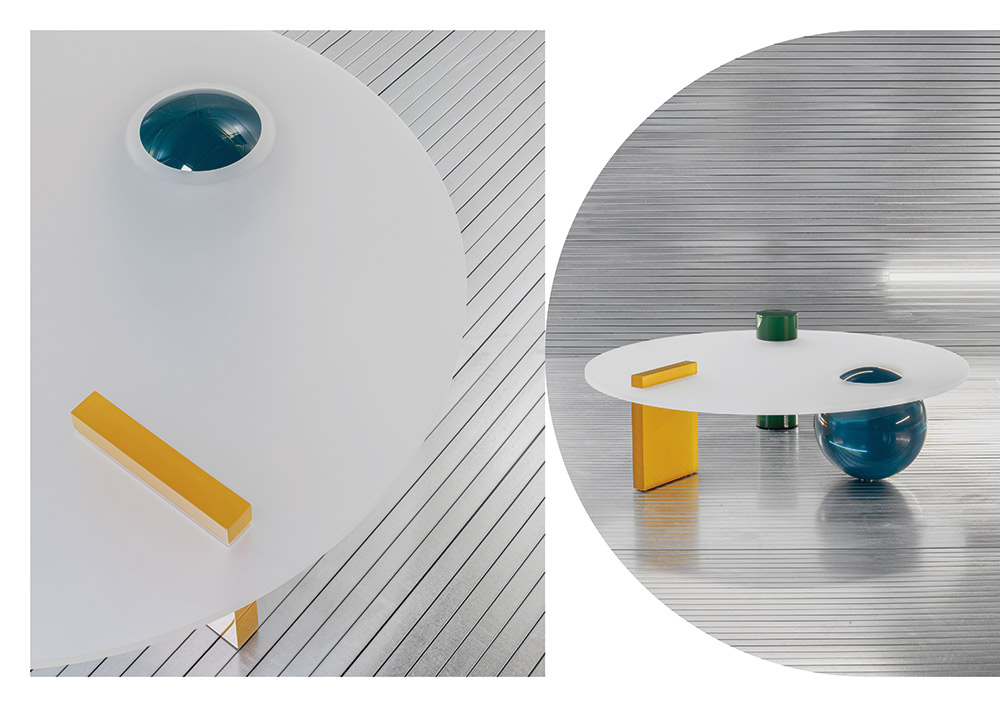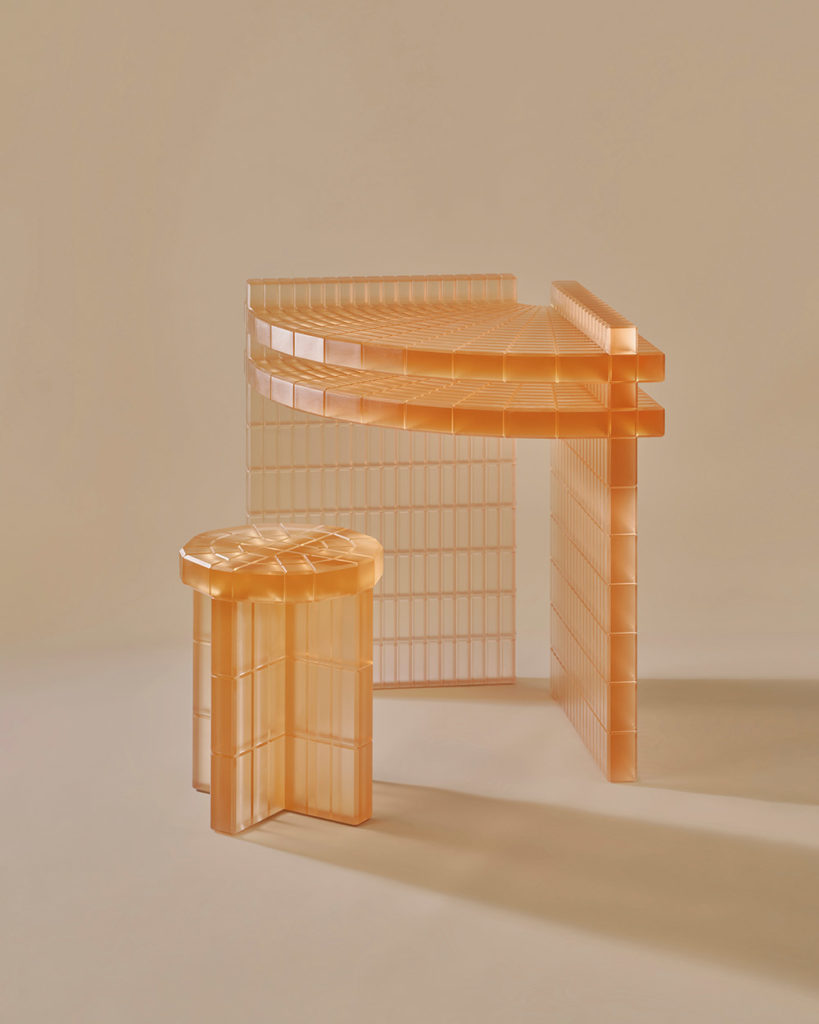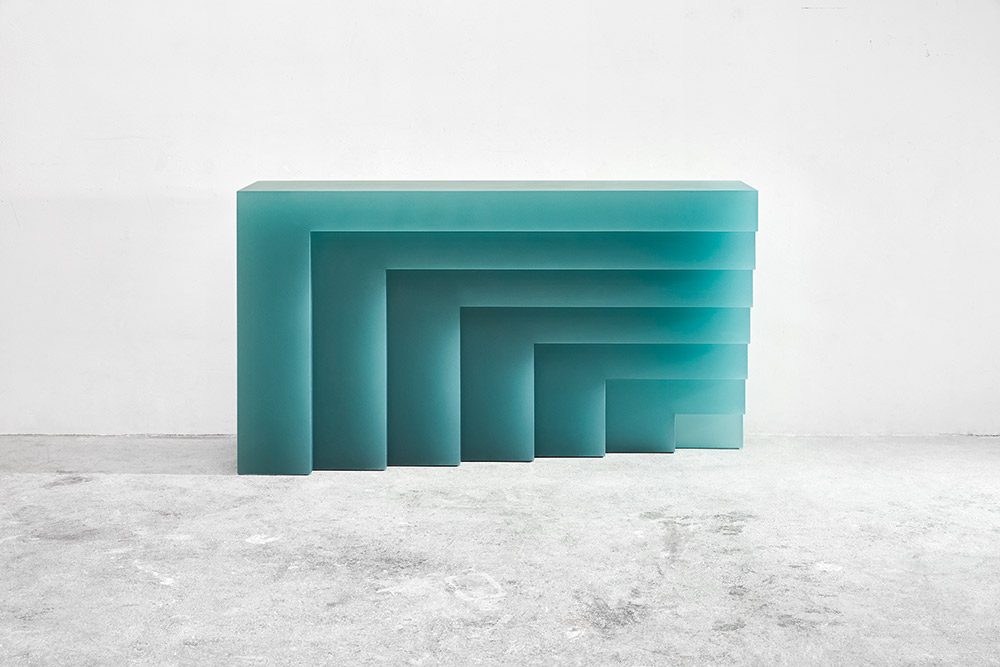Cobra Studios

Cobra Studios Santa Maria dei Clarici: photographed by Jeroen Verrecht.
Brussels-based Cobra Studios—a joint venture between architect Kenny
Decommer and scenographic designer Hugues Delaunay—has presented its first collection, Solids, which is inspired by ancient Roman architectonic orders. The weighty cylindrical and spherical epoxy resin legs of the coffee table give way to a delicate tabletop in a fabulous juxtaposition. These boldly hued supporting elements become the primary focal point in this sculptural piece of furniture, piercing through the humbly translucent top to radically mark their presence. While antiquity remains the contextual bedrock for many designers, Cobra Studios is taking foundational motifs and reworking them with innovative fabrications and configurations.
Laurids Gallée

Laurids Gallée Metropolis Stool: photographed by Pim Top
An homage to Fritz Lang’s expressionist masterpiece Metropolis, Laurids Gallée’s latest collection revels in artificiality augmented by a true artistic vision. The designer aimed to recreate the repetitive buildings that make up the cityscape in the film, while also emulating the modular construction of modern architecture and its individual building blocks. Gallée deliberately coloured his stool with a peachy transparent pigment to help reveal the anatomical framework within, while also allowing a prismatic effect to occur through an interplay between light and the stool’s constituent parts. This results in a highly adaptive construction that has the power to transform any living space with a futuristic sheen.
Niko Koronis

Niko Koronis GSD Console: photographed by Mathijs Labadie
Taking cues from Italian architect Carlo Scarpa’s oeuvre, Niko Koronis’s G Collection comprises of rectilinear furnishings that luxuriate in symmetry and harmony. The softly translucent GSD resin console resembles a carved block of soap with deep recesses formed by its varying thicknesses, which allow this artificial material to adopt a more organic feel when interacting with light. The designer notes that using resins posed a welcome technical challenge, as 400 litres of the material were laboriously manipulated to create the desired layered effect, the outcome of a lengthy trial-and-error period. The finished product exhibits a handcrafted savviness that recontextualizes a previously underappreciated medium, which is in the midst of a renaissance thanks in part to artisans like Koronis.

